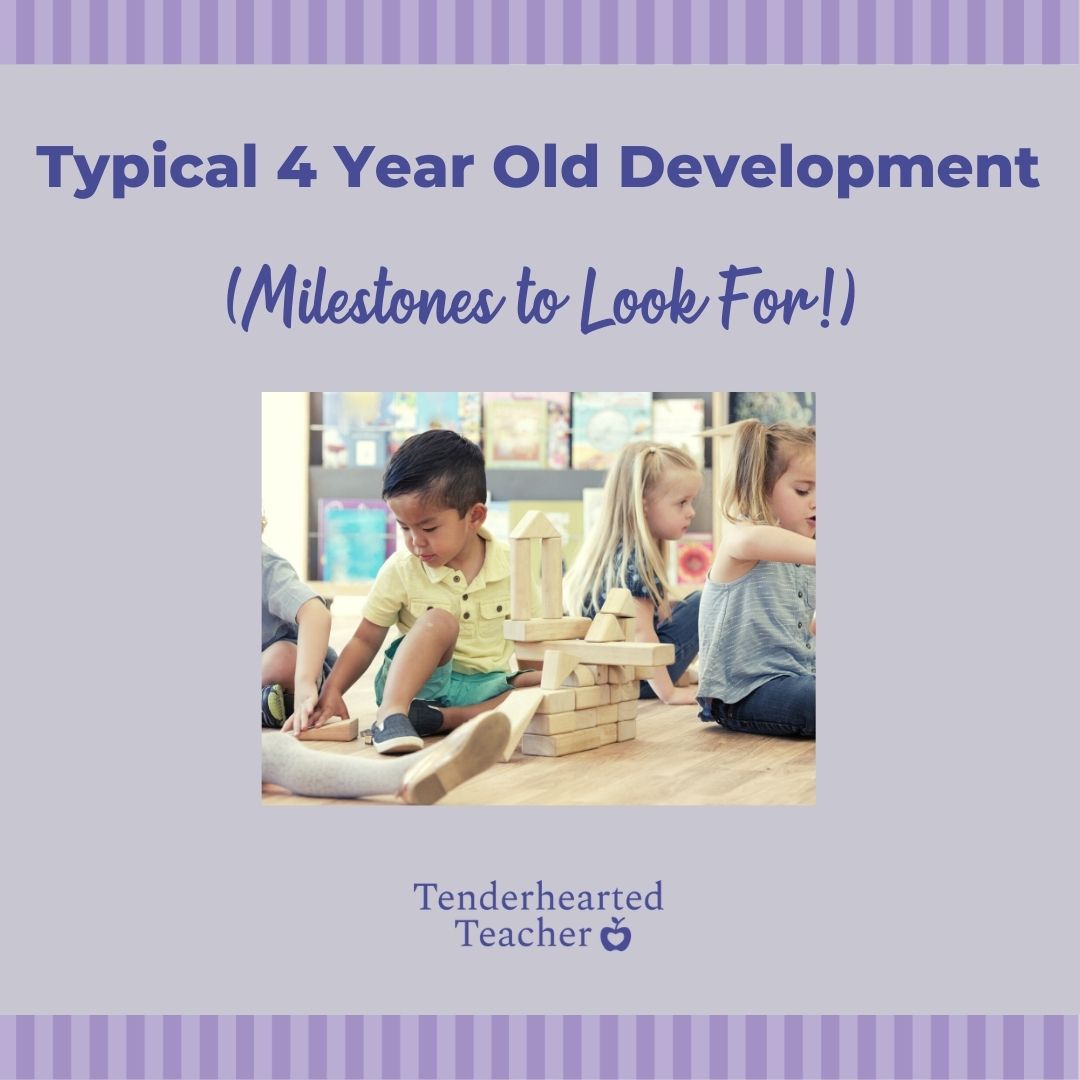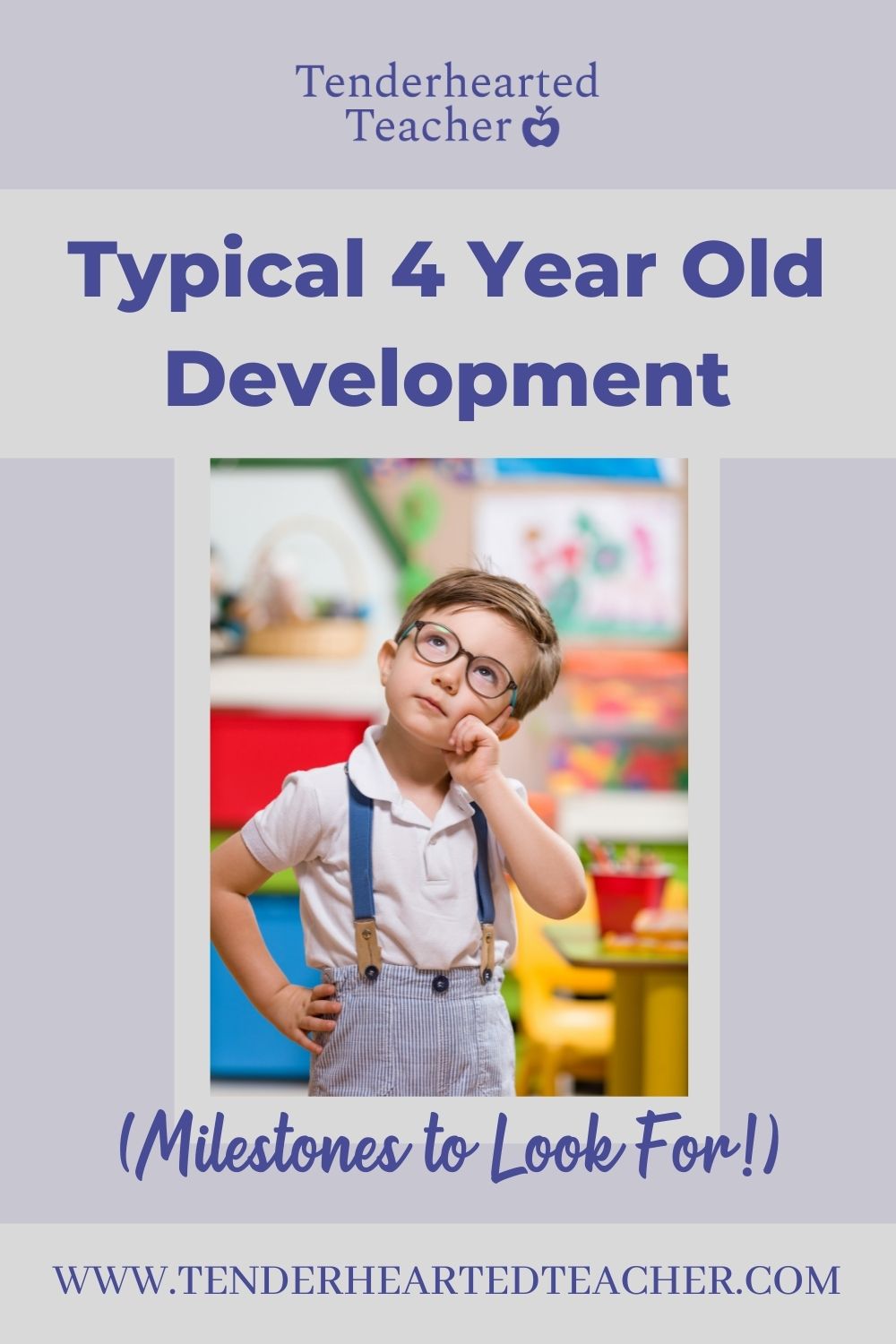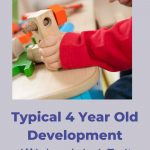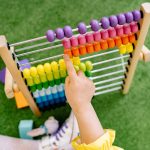
Please note: This post contains affiliate links. As an Amazon Associate I earn from qualifying purchases. Therefore, if you buy something through these links I will receive a small commission at no extra cost to you. Thank you for your support.
As a parent/caregiver, you’ll often be faced with seemingly harmless questions from others about your child’s development. Let’s face it this starts almost immediately after your child’s birth and continues as they grow up. For example, you might be asked “Is your baby walking…talking…fill in the blank…yet?” But, these types of questions might cause you to worry that your child isn’t making adequate progress. Therefore, let me just start with a key disclaimer (one that I share with my students’ families.) It may be difficult but try not to compare your child’s development to anyone else’s. It’s critical to remember that each child will develop at their own pace. Plus it is more important that your child is making consistent progress rather than reaching specific milestones by a certain point in time. In today’s post, I’ll be sharing examples of typical 4-year-old development and ways to encourage growth.
What Can Parents Do to Encourage Typical 4-Year-Old Development?
One of the simplest and most effective ways to encourage several areas of development at once is through play. Children attain new knowledge and skills when they are given ample opportunity to engage in hands-on learning and exploration. According to the National Association of the Education of Young Children (NAEYC):
“Play (e.g., self-directed, guided, solitary, parallel, social, cooperative, onlooker, object, fantasy, physical, constructive, and games with rules) is the central teaching practice that facilitates young children’s development and learning. Play develops young children’s symbolic and imaginative thinking, peer relationships, language (English and/or additional languages), physical development, and problem-solving skills.”
NAEYC
Additionally, the organization states that, “All young children need daily, sustained opportunities for play, both indoors and outdoors. Play helps children develop large-motor and fine-motor physical competence, explore and make sense of their world, interact with others, express and control their emotions, develop symbolic and problem-solving abilities, and practice emerging skills.”
If you’d like to learn more about the importance of play in early childhood please read my post: The Importance of Play in Preschool: Learning Through Fun & Games.
What Does Typical 4-Year-Old Development Look Like?
When I assess a student’s progress in my own preschool classroom I will consider a child’s development in four major areas: cognitive, language/communication, social-emotional, and physical/motor. I’ve shared some examples of typical 4-year-old milestones in each of these areas.
I’ve also shared some of my favorite items and toys that I use in my home or classroom to teach important developmental skills through play. (If I couldn’t find exact matches, I’ve recommended similar products.)
I should also note that many early childhood toys and games can enhance the development of many skills at the same time. For example, a math game can encourage cognitive and language skills simultaneously. But, for the purpose of this post, I’ve separated them by category.
Cognitive:
According to the Early Childhood Knowledge & Learning Center (ECKLC), “Cognition, or cognitive development, includes reasoning, memory, problem-solving, and thinking skills. Young children use these abilities to make sense of and organize their world.” These are some of the cognitive skills I generally see in 4-year-old students.
- Count 10 or more objects
- Name basic colors as well as 2D and 3D shapes
- Understand and use positional words like behind, in between, over, and under
- Begin to name letters and their corresponding sounds
- Follow two-to-three-step directions
- Attend to tasks for longer periods
No products found.
No products found.
No products found.
Language/Communication:
This area encompasses a child’s ability to effectively express themselves in terms of their needs and wants as well as how they engage with others. A 4-year-old should be able to:
- Respond to yes or no questions
- Answer questions such as who, what, when, where, and why
- Request help from others
- Seek answers to questions
- Use more vocabulary and detail to describe people, places, and things
- Repeat songs or rhymes
Language and communication tie directly into literacy learning. If you’d like more information about how to encourage your child’s literacy development please download my Free Literacy Guide here.
Barefoot Books is one of my favorite children’s book publishers. Their books are visually appealing, feature diverse stories and characters, and are great for language development. These are two of my students’ favorites every year. They both have singalong music videos to accompany them as well.
Social-Emotional:
At a very basic level, social-emotional learning (SEL) refers to how we develop self-awareness as well as an understanding of others. For example, SEL can include how we learn to appropriately interact with other people, establish and maintain healthy relationships, and identify and manage our emotions (as well as understand the emotions of others.) Here are some of the social-emotional skills that a 4-year-old is generally able to exhibit:
- Express individuality in their choices (i.e., choose what to play with and how, what book to read, etc.)
- Actively interact with both peers and adults
- Engage in creative and pretend play
- Begin to understand how to share, take turns, and play cooperatively with others
- Start to recognize emotions like happy, sad, frustrated, etc. as well as attempt to self-regulate when confronted with these feelings
- Show care and concern for others
I think that SEL is equally as important as academic learning. Find out more about why I think caregivers and educators should focus on this type of development by clicking here.
No products found.
No products found.
No products found.
Physical/Motor:
Physical development includes both fine-motor skills (that use the small muscles in the hands and wrists) and gross-motor skills (those that use large muscles like arms, legs, and/or torso.) Generally, a 4-year-old will be able to:
Gross-Motor
- Walk forward and backward easily
- Go up and down stairs with little assistance
- Balance on one foot for at least 5 seconds
- Pedal a tricycle
- Hop, gallop, or jump
- Attempt to throw and catch a ball
No products found.
Fine-motor
- Feed themselves using age-appropriate utensils
- Stack blocks, use puzzles, and toys with small pieces
- Begin drawing/writing, i.e. copy letters, names, and basic shapes (Click here for more about the Stages of Emergent Writing in Preschool.)
- Dress and undress themselves (with little assistance)
- Use the bathroom and wash their hands (with little assistance)
No products found.
Here Are Some More of My Posts About Encouraging Typical 4-year-old Development Through Play:
- How Music and Movement Promote Development in Preschool
- Early Math with Blocks: How to Teach Your Preschooler Important Skills at Home
- Free Activities for Your Preschooler: How to Encourage Meaningful Play with Household Items
When Should a Caregiver be Concerned?
To close–I always tell caregivers that they know their child best. Therefore, if they see that their child is making little to no progress in any of the aforementioned areas over time –or if they are beginning to see a decline in skills they were once able to do–it would be wise to speak to their pediatrician. I should note that if caregivers have concerns about their child’s overall development they can also reach out to their local public school district. The school can provide information about a developmental screening or evaluation for special services, such as physical, occupational, and/or speech therapy.
Now talk to me! Do you feel there is pressure from others to have your child reach certain milestones? Please share your comments or questions below.
SAVE TO PINTEREST






I have a 3 year old boy and will definitely be on the look out for these developments when he turns 4.
I’m so glad you found this useful, Charina!
Such a helpful most.
Thank you so much, Jodie!
This is a great milestone list for four-year-olds. I have an almost 3-and-a-half-year-old daughter and I will keep this list in mind. I like that you say that social-emotional learning is just as important as academic learning. I agree! This is something that I’m concerned with because my daughter, an only child, has been home with me full time since the start of the pandemic. We’re looking into ways to get her socialized because she hasn’t had regular and consistent opportunities to play with other children and practice taking turns. We’re hoping everything will be better when she turns 4 in August and we can start to get her involved in a preschool-like setting.
Thank you for your comment. I’m glad you found this helpful. You are not alone in your concerns, Dana. But, luckily parents and caregivers can practice these important socialization skills (like turn-taking) during play activities as well. In addition, they can model appropriate social-emotional behaviors during every day routine. 🙂
Wow this is so helpful! So many tips and examples! Thank you for sharing!!
You’re so welcome. I’m so glad you found it helpful. Thank you for your comment.
Great tips and insights. Thank you!
You’re so very welcome. Glad you found it useful!
I love this post i am a toddler teacher and this sis such great information for parents, caregivers, family etc. can’t wait to read more posts
wow! This is helpful
helpful post!
Really enjoyed your post. So helpful for me with my 4 yrs old